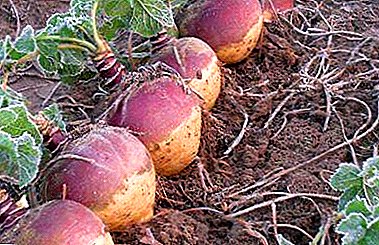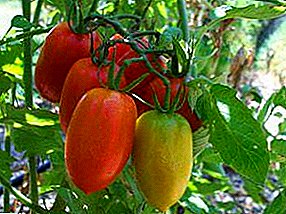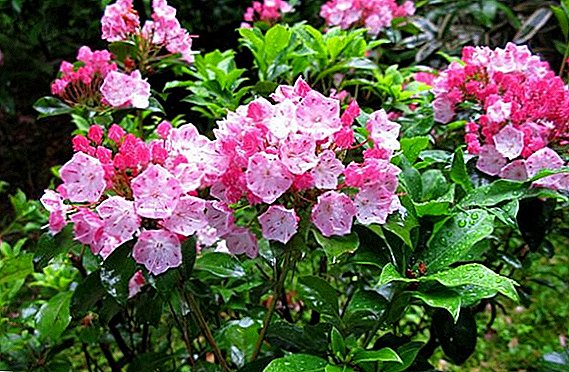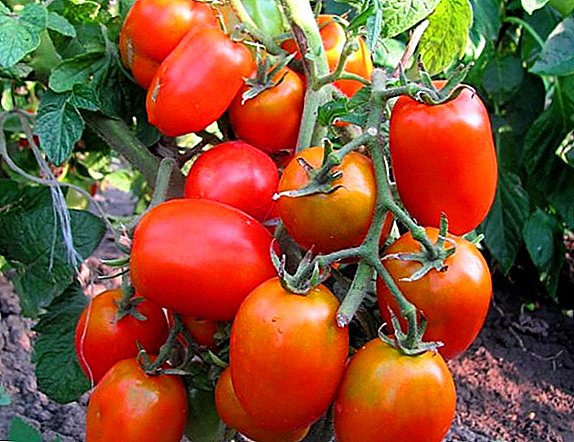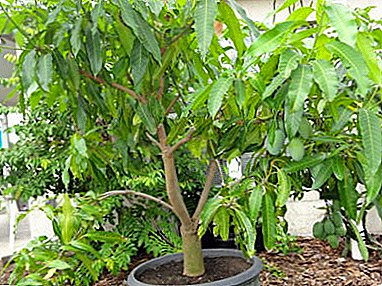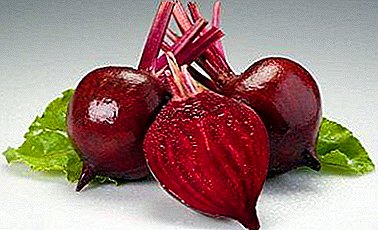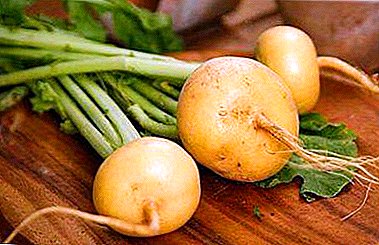
Even before the appearance of potatoes in Russia, turnip was the main and most popular product on the table and was considered the “second bread”.
A turnip was used to prepare many dishes: side dishes, soups, mashed potatoes, added to pastries, and also steamed, fried, baked.
There are different types. The crop can be harvested twice during the summer, it is well stored, retaining its useful substances until spring, it contains a lot of vitamin C, vitamins of group B, PP, phosphorus, magnesium, iron, calcium, sulfur, carotene.
What species should be planted?
Today, this culture is not so popular and it is quite difficult to meet turnips at sites. Choosing the right variety is very important. because the area of cultivation, the type of vegetable and a number of other factors affect the quality and quantity of the crop.
- Fruits of yellow color have a rich taste and have a rather coarse dietary fiber, cleansing the slag and toxins well on the stomach.
- White turnips are more delicate, soft and sweet, fragrant, well absorbed by the body, useful for people suffering from indigestion.
- There are also some types of fodder turnips or turnips suitable for food.
What to consider?
All types of turnips have advantages and differ from each other in taste, shape, color and ripening terms. Each summer resident can grow exactly the kind that will satisfy his needs. When choosing it is necessary to take into account such parameters as:
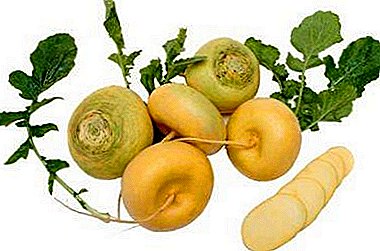 Climate. It is very important to choose the type of turnip, adapted for breeding in a particular area. Nowadays there are many species for successful breeding in the regions of Siberia, the Urals and the middle bands of Russia.
Climate. It is very important to choose the type of turnip, adapted for breeding in a particular area. Nowadays there are many species for successful breeding in the regions of Siberia, the Urals and the middle bands of Russia.When the climate is not suitable for cultivation in this area, turnip begins to bloom, the root does not ripen, and poor quality seeds are born.
- The purpose of growing. Choose based on their taste preferences and goals.
It is worth noting that turnip has a different taste: one is loved for its sweet taste, the other will interest those who are very keen, and there are also types with bitterness.
There are varieties of turnips that grow to get greens (lettuce turnips), while others are bred for the sake of root crops.
What is?
- Turnip varieties for the Urals. Turnip is quite unpretentious plant, which is important for the Ural region. Varieties adapted to weather conditions in the Urals are not afraid of frost and give a good harvest. For this area fit:
- "Milan Pink";
- Korelskaya;
- "Snow Maiden".
The most popular is "Petrovskaya-1" - it is quite hardy, the fruitful type of turnip is considered the best in taste.
- For Siberia. In Siberia, as in the Urals, the natural conditions are not very pleased with summer residents, therefore the varieties for Siberia are quite similar to the Urals. Here are some of them:
- "Caramel";
- "Snowball";
- "Geisha".
Variety - "Snowball" is ideal for breeding in Siberia, as it manages to give a double harvest, even in cold summer conditions. The variety has a high yield, can withstand frosts to minus three, four degrees, has white, large, bitter-free fruits and leaves suitable for human consumption.
- For central Russia. In the region of central Russia, any turnip can produce a rich harvest without fear of low temperatures. Famous varieties such as:
- "Golden Ball";
- "May yellow";
- "May White";
- White Night.
General rules of planting and care, ripening
 Sow a turnip in the open ground with seeds in summer and spring. The date may vary by seeding area and air temperature. In the middle lane, seeds are usually planted from late April to early May. In Siberia and the Urals, the beginning of sowing depends on the temperature regime in a given period of time. In summer, you can sow a vegetable at any time, the main thing is to harvest before the onset of cold weather.
Sow a turnip in the open ground with seeds in summer and spring. The date may vary by seeding area and air temperature. In the middle lane, seeds are usually planted from late April to early May. In Siberia and the Urals, the beginning of sowing depends on the temperature regime in a given period of time. In summer, you can sow a vegetable at any time, the main thing is to harvest before the onset of cold weather.
The most popular species for breeding in the open field - "Petrovskaya -1". This grade perfectly remains, rather hardy and fruitful. It is considered one of the best to taste and is suitable for cultivation in open ground in any region.
Turnip tolerates low temperatures quite well and yet there are circumstances when it is impossible to sow turnips in open ground. In this case, summer residents have the opportunity to grow a crop in a greenhouse and harvest ten to fourteen days earlier than on the street. Turnip variety "Snowball" is recognized as the most delicious of the greenhouse varieties.
Another important point in the selection of varieties is the ripening period. There are early, mid-season and late varieties. The ripening period of early varieties ranges from 45 to 60 days; mid-season ripen in the period from 60 to 90 day; later varieties ripen 90 or more days.
Sweet varieties
Many types of turnip have a sweet taste. Such a turnip is loved by children and used for therapeutic and dietary food. Sweet varieties "Russian size", "Golden ball", "Pull-push", "White ball", "Snow White". Fertile or light sandy soils are ideal for growing sweet turnip.
Description and photos of plants
Petrovskaya-1
Pretty hardy and unpretentious variety. Maturing terms range from 60 to 65 days. The roots are yellow with a hard, sweet flesh. It has a rounded flat shape and a pale green head. Long stored. Root juicy and sweet. For good yield and excellent taste, this species is respected by summer residents.

For details on the turnip variety Petrovskaya-1, see the video below:
"Geisha"
This type of turnip salad belongs to the early ripe varieties. Differs in fruits of white color, rounded shape, edible leaves, with a large amount of vitamins. Sprouts feel great in conditions of drought and cold, can grow in the shade, but are not suitable for prolonged storage.

About the variety "Geisha", see the video below:
"White ball"
This good and high-yielding salad variety, mid-season ripening. Root crops of a round form, white color, taste soft, without bitterness. The leaves of the plant are very rich in vitamin C, suitable for making salads.

"White Night"
Is a high-yielding, mid-season variety. A large plant, the fruit can weigh up to five hundred grams and reach twelve centimeters in diameter. The flesh is quite juicy.

"Purple"
Quite high-yielding, mid-season type of turnip. It has round fruit, pink-raspberry color with a white tip. The flesh is white, different juicy taste and a high content of healthy substances. Able to be stored for a long time. It is indicated for diabetes, overweight and recommended for feeding children.

"Snowball"
This is an early ripe variety of turnip. The plant has a rounded white color, delicate skin and juicy, dense flesh. Universal grade, well withstands low temperatures, grows well in the shade, long stored.

"Milan"
This turnip ripens pretty quickly - from the emergence of shoots to harvest, 50-60 days pass, and the vegetable grows very quickly: in just four, six days. The fruits have a round-oblate shape, white and red-violet smooth skin, white juicy flesh, with a sweet taste.

Due to the fact that turnip gives good yields, can be stored for a long time, has useful healing properties, this ancient cultural plant gradually regains its rightful place among gardeners. It is impossible to choose the best variety, since any of the species has both advantages and disadvantages. Therefore, it is necessary to choose from personal preferences and climatic conditions.


 Climate. It is very important to choose the type of turnip, adapted for breeding in a particular area. Nowadays there are many species for successful breeding in the regions of Siberia, the Urals and the middle bands of Russia.
Climate. It is very important to choose the type of turnip, adapted for breeding in a particular area. Nowadays there are many species for successful breeding in the regions of Siberia, the Urals and the middle bands of Russia.